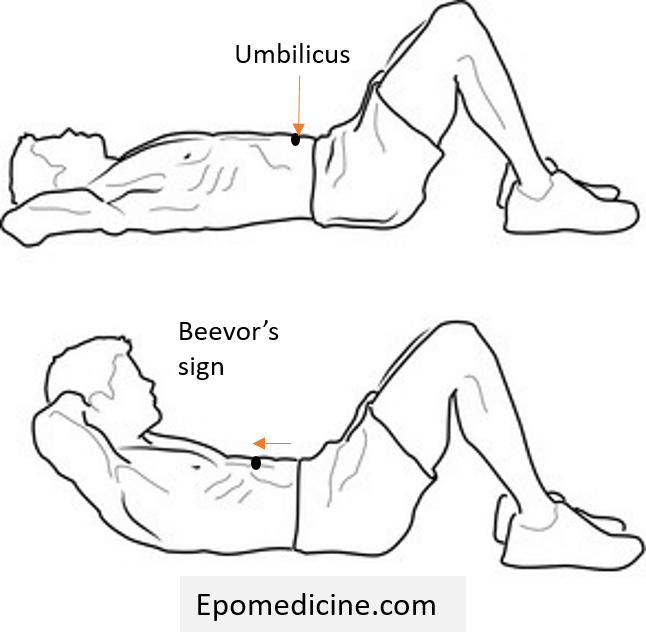Named after: Charles Edward Beevor
Definition: Upward (Cephalad) movement of the umbilicus in a supine patient attempting either to flex the head onto the chest against resistance or performing a sit-up. It is not a pathologic reflex, but a sign resulting from imbalance in muscle strength between the upper and lower abdominal muscles.
Mechanism: Normally, the rectus abdominis muscle contracts as a single unit with no predominance of upper half over the lower part or left over the right side. Therefore, normally on trunk flexion, the navel does not move.
- Weakness of upper part of rectus abdominis (Navel moves upward): Beevor’s sign
- Weakness of lower part of rectus abdominis (Navel moves downward): Inverted Beevor’s sign
The nerve supply to the rectus abdominis muscle at the level of the umbilicus is T10 nerve roots.
Eliciting Beevor’s sign:
- Patient is initially in supine position
- Ask the patient to either flex his neck or to sit-up without using the arms
- Watch for the movement of navel
Conditions where Beevor’s sign is positive:
- Spinal lesions (e.g. tumor, syringomyelia) between T10-T12 segment
- Myopathies affecting abdominal muscles, particularly Fascio-scapulo-humeral dystrophy (FSHD)
- Observed less frequently in other conditions:
- Pompe disease
- Myotonic dystrophy
- Amyotrophic lateral sclerosis
- Adult form of acid maltase deficiency
References:
- Althagafi A, Nadi M. Beevor Sign. [Updated 2022 Apr 9]. In: StatPearls [Internet]. Treasure Island (FL): StatPearls Publishing; 2022 Jan-. Available from: https://www.ncbi.nlm.nih.gov/books/NBK545262/
- A Dictionary of Neurological Signs By A.J. Larner
